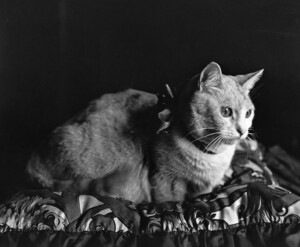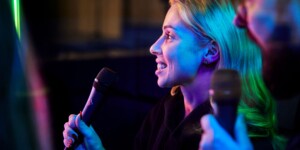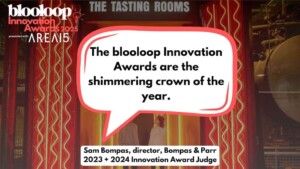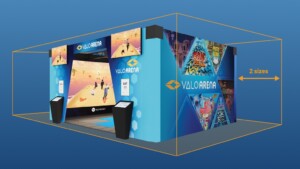An exhibition at the University of Oxford will showcase art created by the world’s first ultra-realistic AI humanoid robot artist, Ai-Da.
Named after the British mathematician and computer pioneer Ada Lovelace, Ai-Da uses a robotic arm and pencil to draw what she sees thanks to cameras in her eyeballs. AI algorithms created by scientists at the University of Oxford help produce coordinates for her arm to create art.
Ai-Da’s solo exhibition, ‘Unsecured Futures’, will run from June 12 to July 6 at the Barn Gallery at St John’s College.
The exhibition will present a selection of Ai-Da’s artwork, including drawing, painting, sculpture and video art. There will be eight sketches, 20 paintings, four sculptures and two video works, including a work that references Yoko Ono’s ‘Cut Piece’.
AI algorithms help Ai-Da to create art
The attraction questions our relationship with technology and the natural world by presenting how AI can be both progressive and disruptive within society.
It will explore the boundaries between AI, technology, and organic life, as new technologies develop rapidly.
Alongside this, emerging artists have created works in plastic, silver and bronze 2D and 3D, developed through AI processes and new technologies.
Aidan Meller, Ai-Da’s brainchild, told CNET: “We didn’t want to go down the simplistic route. We realized that if we did that, people just say it’s an expensive printer. No, this is an AI algorithm, it is entirely creative – we do not know what the outcome will be.”
Smart museums and tech trends

Meanwhile, China is working to build smart museums with the latest technology, including artificial intelligence (AI), augmented reality (AR), and virtual reality (VR).
As technology becomes increasingly integral in creating unique and memorable visitor experiences, Blooloop has predicted six attraction tech trends as ones to watch in 2019, including AI, VR, AR, interactivity, robots, and voice activation.
Images: Ai-Da













